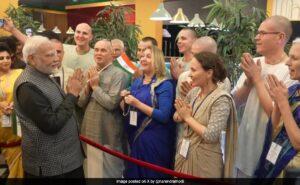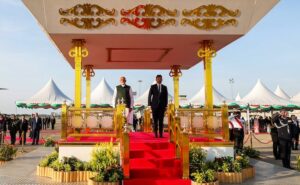New Delhi:
Russian President Vladimir Putin is hosting the 16th BRICS Summit this week in Kazan and meeting with over 20 heads of state, including Prime Minister Narendra Modi and Iranian President Masoud Pezeshkian. The Kremlin described the gathering as one of the largest foreign policy events ever held in Russia, adding attempts to isolate the country on the global stage had failed.
PM Modi on Tuesday met Mr Putin on the sidelines of the BRICS Summit. The Prime Minister will meet Chinese President Xi Jinping on Wednesday, following the breakthrough in negotiations for patrolling points along the Line of Actual Control (LAC).
What is BRICS?
BRICS is an association of five major emerging national economies – Brazil, Russia, India, China and South Africa. The BRICS nations are characterised by their large, rapidly growing economies, significant influence on regional and global affairs, diverse economies with complementary strengths and emerging markets with increasing global significance. Established to improve cooperation and collaboration among its members, BRICS focuses on promoting peace, security and development in a multipolar world.
BRICS: History
The concept of BRIC (Brazil, Russia, India and China) was first introduced in 2001 by Jim O’Neill, former Chief Economist of Goldman Sachs. He argued these four emerging economies would play a significant role in global economic growth over the coming decades. The BRIC nations held their first formal summit in Yekaterinburg, Russia, in June 2009.
South Africa joined in 2010, expanding the group to BRICS.
BRICS: Members
For a long time, BRICS comprised the five original members – Brazil, Russia, India, China and South Africa.
At the 2023 BRICS summit, six nations – Argentina, Egypt, Ethiopia, Iran, Saudi Arabia and the UAE – were invited to join the alliance. While all accepted the invitation, Argentina later withdrew, with newly elected President Javier Milei choosing a pro-Western stance and saying that Argentina would not “ally with communists.” Saudi Arabia confirmed its intention to join but has delayed its official membership, with no further explanations.
Why Expansion
The expansion of BRICS initially sparked discussions within the group. China and Russia were keen on adding new members, while Brazil and India were more cautious, worried it would dilute their influence.
Egypt and Ethiopia joined to amplify African voices and attract investment. Saudi Arabia and the UAE, major oil producers and key US allies, brought significant economic weight.
The new members also raised questions about their relations with the West. Iran and Russia opposed US influence, while China competed with the United States.
BRICS: Statistics
BRICS nations account for 45 per cent of the global population (3.2 billion people) and 28 per cent of the global economy ($28.5 trillion), reports BBC. They also represent 16 per cent of global trade.
The gathering marks the first BRICS Summit since the group’s expansion in Johannesburg last year.



